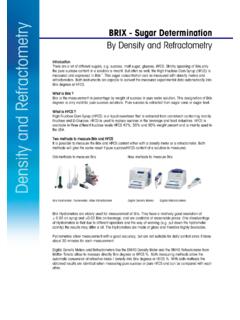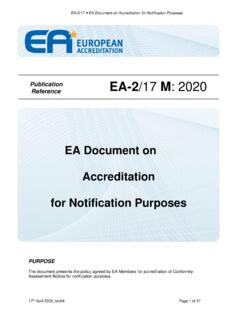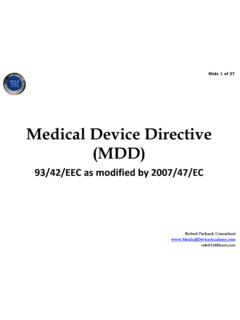Transcription of XT/PR Roofs Pitched Roofs
1 PIR Insulation XT/PR Insulation for Pitched RoofsRoofs03/018308/4613XT/PRThin-R Pitched Roof XT/PR on sloped Roofs (ventilated, hybrid or warm) provides the most efficient U-Values with minimal intrusion into valuable living space. The roof construction is a critical element in the building fabric and is an area at high risk of heat loss. Using XT/PR will reduce heat loss while also delivering excellent thermal bridging Roof construction is a particularly effective way of insulating complex Roofs . Insulating above - or above and between - the roof timbers ensures that the structure is kept at or near the internal environmental conditions, reducing thermal stress and condensation Clause The Pitched roof insulation shall be Xtratherm Thin-R XT/PR manufactured to EN 13165 by Xtratherm, comprising a rigid Polyisocyanurate (PIR) core between low emissivity foil facings.
2 The XT/PR_ _ _mm with Agr ment certified Lambda value of W/mK to achieve a U-Value of _ _ _W/m2K for the roof element. To be installed in accordance with instructions issued by PIR achieves an A+ rating under the BRE Green to NBS clause P10 140, K11 695, K11 55, P10 15, P10 50 Resistance R ValuesThe resistance value of any thickness of Xtratherm insulation can be ascertained by simply dividing the thickness of the material (in metres) by its agr ment declared lambda value, for example: Lambda W/mk and thickness 50mm -> -> R-Value = In accordance with EN 13165, R-values should be rounded down to the nearest (m2K/W).Data SheetXT/PRInsulation for Pitched RoofsThermal ResistancesThickness (mm) R-Value (m2K/W) a conventional ventilated roof a 50mm clear ventilation gap should be maintained between the insulation and the roofing felt.
3 In certain instances where a vapour permeable membrane is used instead of standard roofing felt, the ventilation gap may be dispensed with. Refer to manufacturer s Intrusion into Living AreaReduced Risk of CondensationLow Emissivity Foil FacingsLightweight and Easy to InstallReduced Thermal Bridging2In a ceiling, typically fibre glass is placed between and over the joists this hides the top of the joist and may lead to health and safety concerns when the roof space is being accessed. The thermal bridge which occurs through the joists can be addressed by placing a layer of XT/PR to the underside, before the plasterboard is fixed. Xtratherm XT/TL Drylining boards can also be used. This allows for the roof space to be accessed in a safe manner leaving the top of the joists exposed, which allows the roof space to be used for , a layer of insulation - covered with chipboard - can also be placed over thejoists.
4 Xtratherm Walk-R offers a ready made solution for this application. In every roof space where cold water tanks or other fitted appliances or services occur, the Contractor must construct a permanent boarded walkway from the roof access point to the tank ball valve position and / or the appliance location. This walkway should be supported above the first layer of insulation to prevent any compaction of insulation below the walkway. NoteXT/PRLength (mm)2400 Width (mm) 1200 Thickness (mm)25, 30, 40, 50, 60, 70, 80, 90, 100 Other thicknesses may be available depending on minimum order quantity and lead & UnitsThermal Conductivity (W/mK)Compressive Strength>150 (kPa)Reaction to FireNPDX tratherm CE Declaration of Performance (DoP) for this product is available for download from our Guidelines Ventilated Roof1.
5 Fix positioning battens to inner face of rafters, flush with the top edge of the Allow for ventilation gaps, normally 50mm. (May be reduced depending on breather membrane certification).3. Cut boards with a fine toothed saw to fit tightly between rafters, flush with the bottom of the rafter. Allow slight oversize of cut to achieve friction fit and seal any gaps with expanding An additional second layer is required, this should be fixed to the underside of the rafter. Run second layer transverse to the first with joints tightly butted. Fix with nails to hold insulation in place until plasterboard is Provide a separate vapour control layer between insulation and plasterboard or alternatively, tape the joints of the insulation with an aluminium foil Finish with plasterboard fixed with drylining screws.
6 Screw fix every 150mm, 12mm from edge of boards ensuring a minimum 30mm penetration into the the second layer can be achieved with XT/TL Xtratherm Drylining board. Repeat steps 1 to 3 and replace second layer with XT/TL, a ready made PIR insulation board bonded to plasterboard. Where joints between sheets of XT/TL are unsupported by the rafters, timber noggins should be installed. Seal and tape the joints of the plasterboard in accordance with Standard Drylining RoofFollow the same procedure as a ventilated roof except an approved Vapour Permeable underlay is used above the rafter allowing the 50mm ventilation space to be dispensed with. Typically, a 25mm unventilated void is to be maintained; Agr ment certification covering the membrane should be Roof1.
7 Ensure cavity wall insulation has continued to roof height to meet with the roof Fix a treated timber stop rail to the end of the rafter at the Lay XT/PR staggered jointed over the rafters. Ensure joints are tightly butted and fill any gaps with expanding foam. Joints should be fully supported by rafters. Boards can be temporarily fixed with Fix 38mm x 50mm counter battens with approved fixings through the XT/PR into the rafter. The amount of fixings is determined by the fixing manufacturer who can also provide wind load A breathable sarking membrane should be fitted; refer to manufacturer s Agr ment certification. Ventilation may have to be provided subject to that certification and minimises the risk of interstitial condensation forming on the underside of the membrane.
8 Providing an unventilated void under the membrane can improve the thermal Secure 50mm x 25mm tiling battens through counterbatten and XT/PR to the If an additional second layer is required, this should be fixed between the Cut boards with a fine toothed saw to fit tightly between rafters, flush with the top of the rafter. Allow slight oversize of cut to achieve friction fit and seal any gaps with expanding Provide a separate vapour control layer between the bottom of rafter and Finish with plasterboard fixed with drylining screws. Screw fix every 150mm, 12mm from edge of boards ensuring a minimum 30mm penetration into the must be followed to ensure that installation is in accordance with current Building Regulations and accounted for in the energy , Cutting and StorageDurabilityXtratherm insulation should be stored off the ground, on a clean flat surface and must be stored under cover.
9 The polythene wrapping is not considered adequate protection for outside exposure. Care should be taken to protect the insulation in storage and during the build insulation boards can be readily cut using a sharp knife or fine toothed saw. Ensure tight fitting of the insulation boards to achieve continuity of insulation as asked for within the ACDs. Appropriate PPE should be worn when handling insulation. Please refer to Health & Safety data sheets on our boards are wrapped in polythene packs and each pack is labelled with details of grade/type, size and number of pieces per products are stable, rot proof and will remain effective for the life span of the building, dependent on specification and installation.
10 Care should be taken to avoid contact with acids, petrol, alkalis and mineral oil, when contact is made, clean materials in a safe manner before Performance Thin-R ThicknessRafter CentresBetweenUnder600mm400mm120mm25mm* * * * 1U-Value calculations to EN ISO:6946XT/PR Insulation for Pitched RoofsTable 2U-Value calculations to EN ISO:6946XT/PR Insulation for Pitched Roofs - Approved Breather Membrane 25mm Void- XT/PR between Rafters- XT/PR under Rafters to reduce thermal bridging- Vapour Control Layer- PlasterboardHybrid Roof:Warm Roof:- Breather Membrane- XT/PR over Rafters to reduce thermal bridging- XT/PR between Rafters- Vapour Control- PlasterboardTypical U-ValuesThin-R ThicknessRafter CentresBetweenOver600mm400 * Insulation thickness onlyXT/PRPlease refer to the Resources section of our website for more detailsDedicated Technical Team: UK: +44 (0) 371 222 1055 ROI: +353 (0) 46 906 6050 Thermal Calculations, Technical Advice or to arrange a technical visit.








